As the Conservancy celebrates the above WatchList success stories, it continues to vigilantly monitor current threats to historic properties in the community. The Conservancy names the following properties to its 2018 WatchList:
Traditional Residential Neighborhoods in Ardmore
Ardmore’s traditional neighborhoods south of Lancaster Avenue greatly contribute to the character of Lower Merion. They contain some of the township’s oldest residences and reflect Ardmore’s complex history as an early railroad suburb, a dynamic site of industrial activity, and the seat of government within Lower Merion. Buildings in this neighborhood are diverse in style, age, and type, and reflect the history of the community. They include single, twin, and multi-family houses, as well as apartments and mixed-use buildings.
During recent years, Ardmore has endured changes that have eroded its historic neighborhood character. The most significant of these changes have followed from the demolition of multiple late-nineteenth and early-twentieth-century houses. The replacement of these residences with new and much more costly units has not only altered the historic appearance and form of the neighborhood; it has also reduced the supply of affordable housing in the township.
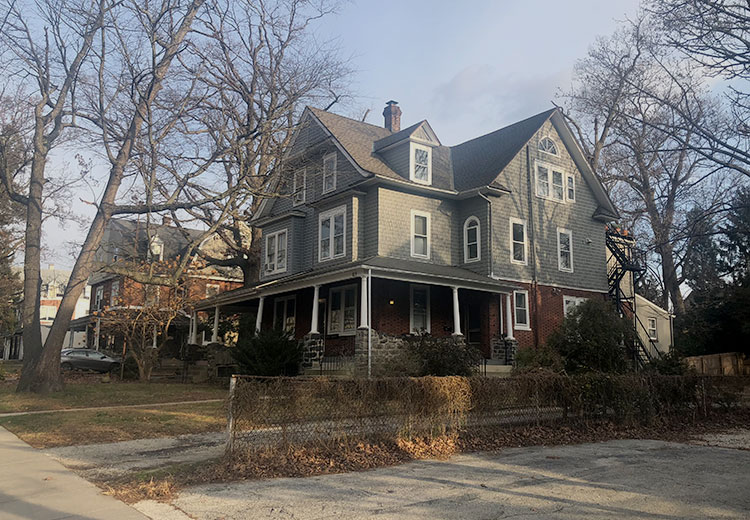
Ardmore does not need to remain static to retain its historic character and its quality of life; thoughtful upgrades to the existing housing stock as well as new development can help stimulate activity and create opportunities for vibrancy. Change, however, should not undermine or destroy core attributes of the community, as it did at the corner of Spring Avenue and Cricket Avenue, where 19 townhouses and twin homes recently replaced five late-nineteenth-century residences.
The Conservancy is hopeful that a new and thoughtful zoning code, which the Township expects to adopt in the summer of 2019, will reverse this trend. One aim of proposed code is to introduce building standards in traditional neighborhoods that will create disincentives for demolishing historic properties. Another aim of the proposed code is to ensure that new development, when it occurs, is consistent with a neighborhood’s historic form. Ardmore’s traditional neighborhoods, which are particularly vulnerable to teardown activity and incompatible development, should be prioritized for such zoning.
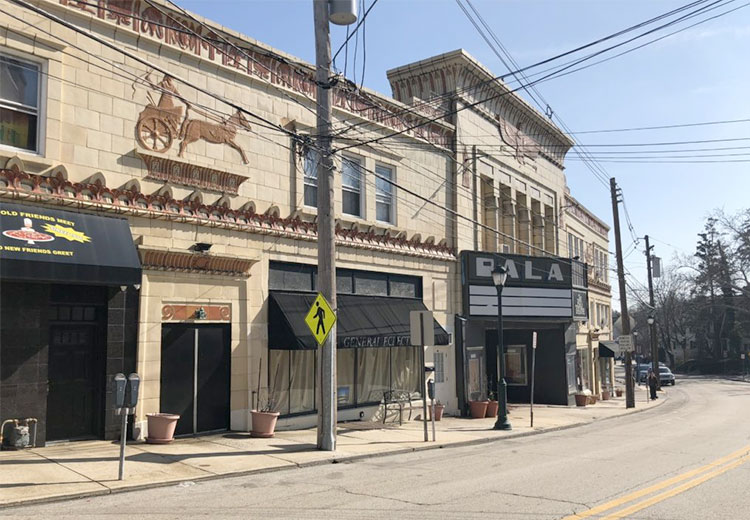
Bala Theatre, Bala Cynwyd
The Bala Theatre, which the Conservancy named to its WatchList in 2013, 2015, 2016, and 2017, remains vulnerable to vacancy and neglect. The Bala is one of the only remaining Egyptian Revival theatres in America. Just as importantly, the lavishly decorated 1927 building is a landmark on Bala Avenue, a traditional main street in Lower Merion. The Bala Theatre needs a use that is sensitive to its grandeur and is consistent with its original use as a community gathering space. It also needs protections that will safeguard it from inappropriate modifications or demolition. Recently, members of the Historical Commission recommended elevating the historic designation of the theatre. The Conservancy concurs with this recommendation and urges the Board of Commissioners to vote in favor of listing the building as a Class I resource.
Clairemont, Villanova
Lower Merion School District proposes to build a new middle school at the Center for Islamic Education/Clairemont, a 22-acre property in Villanova. To accommodate the school, the District intends to demolish the property’s Classical Revival mansion, a National-Register eligible property that Morris Clothier, the chairman of the Strawbridge & Clothier department store establishment, commissioned in 1917. The mansion itself is significant for its design and for its designer, Horace Trumbauer, one of the most distinguished American architects of the early twentieth century. The District also proposes to demolish another significant building on the property, a late-nineteenth-century carriage house designed by the eminent architect, Addison Hutton. Hutton’s commissions in Lower Merion include, among others, St. Charles Borromeo Seminary and the nearby Beechwood House on Montgomery Avenue. The Shipley School rehabilitated the latter, which was once scheduled for demolition, into campus classrooms and faculty housing. The results are stunning.
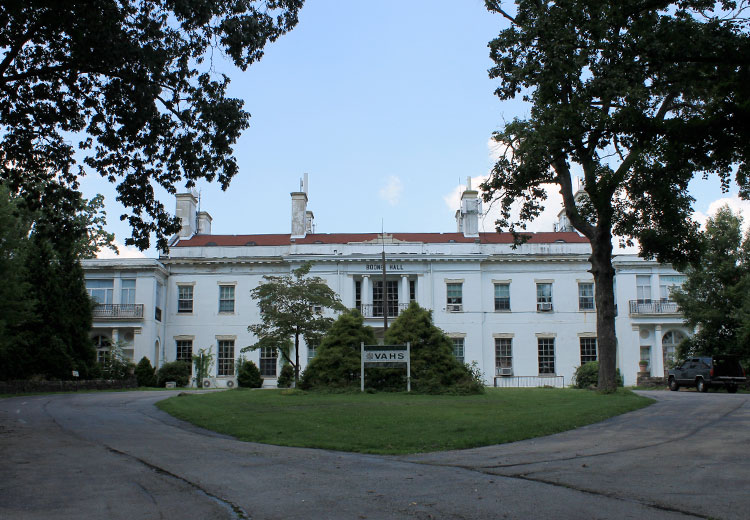
The Conservancy has consistently encouraged the School District to consider alternatives to the demolition of historic resources at Clairemont. It has requested that the District, at the very least, consult with preservation architects and engineers to identify ways in which select components of the property can be incorporated into the new middle school campus. As such, the Conservancy appreciates the District’s recent willingness to engage in conversations with our staff and with the Historical Commission. The Conservancy looks forward to continuing these conversations with the District.
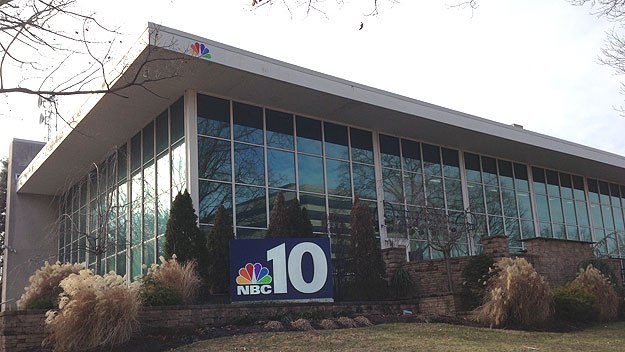
WCAU Studios Building, Bala Cynwyd
Lower Merion was once home to dozens of impressive mid-twentieth-century buildings. Unfortunately, development has consumed most of them. Bala Cynwyd’s WCAU Studios Building, a glass and steel box, is one of Lower Merion’s last remaining mid-century buildings. Designed by Robert Montgomery Brown and George Howe (the architect who partnered with William Lescaze to design Philadelphia’s PSFS building, America’s first International-Style skyscraper), the WCAU Building is an important mid-century commission. It is also significant for its history, as it was designed to house the nation’s first television studio.
The building is currently being marketed for sale. The Conservancy appeals to the WCAU’s owner, Comcast, and any future owners to retain and sensitively repurpose the building for contemporary use. With its glass walls and sleek skeleton, the building can be incorporated into a new plan that is both compelling and functional. All across the country, people are reclaiming and embracing designs of the mid-century. We should do the same for this significant Lower Merion building.
Barker Mill, Gladwyne
The Barker Mill has appeared in this annual publication with more frequency than any other WatchList property. Between 2003 and 2017, the mill has been listed ten times. The multiple listings reflect the Conservancy’s concern about the mill’s extended vacancy and its poor physical condition.
The mill, which dates to the late 1880s, but likely sits on an eighteenth-century foundation, is representative of the industrial architecture that once lined Mill Creek and other nearby tributaries of the Schuylkill River. During its working years, it produced a variety of manufactures, including rifles, carpets, and woolen and cotton goods, and helped advance Lower Merion’s standing as an important center of industry in Philadelphia. As past readers of the WatchList know, the Barker is one of two surviving mills in Lower Merion. The other, Lee’s Shoddy Mill in Bala Cynwyd, will soon be demolished for senior housing.
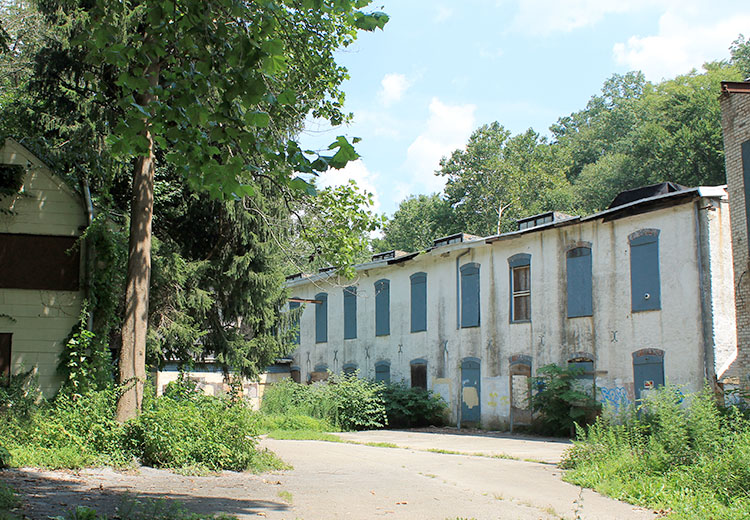
Preservation of the Barker Mill is merited. Adapted for a new use, the mill can provide residents of the township and beyond with opportunities to understand, analyze, memorialize, and teach Lower Merion’s industrial history. Although the mill’s owner has obtained approval for a plan that repurposes the historic building into condominiums, no work on the mill has commenced. Until it does, the Conservancy implores the mill’s owners to care for this irreplaceable asset. It also urges the Township to vigorously enforce code violations so that the building does not advance so far into disrepair that its rehabilitation is impossible.
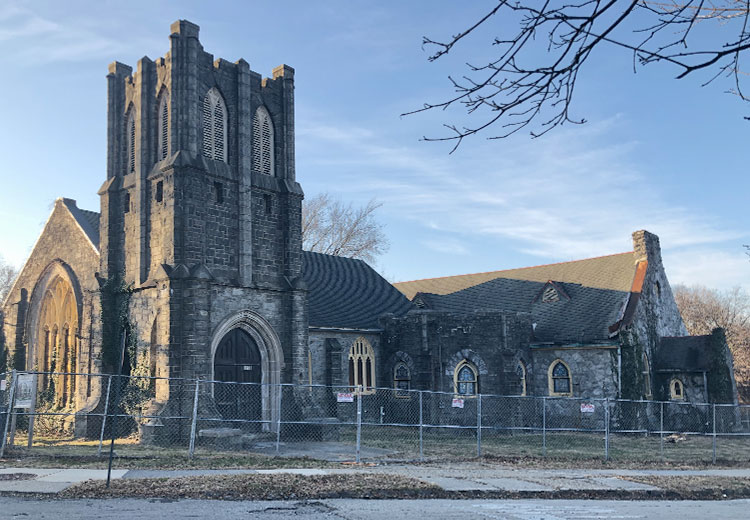
Baptist Church of the Evangel, Narberth
In 2016, the Conservancy noted in its annual WatchList that the demolition of Narberth’s Baptist Church of the Evangel was “imminent.” At the time, plans for the church’s preservation and rehabilitation were abandoned because an ordinance amendment that could have permitted its conversion to a mixed-use development was vetoed. Subsequently, the developer won approval to construct a by-right apartment building on the site.
Two years later, however, the building still stands. The condition of the church is steadily deteriorating, but the building’s fate is not sealed. As of this writing, the developer is still considering a preservation-oriented solution. This solution would take advantage of provisions in the Borough’s new Form-Based Zoning Code that permit the non-residential use of certain older buildings in exchange for preservation protections.
The availability of this provision should prompt the owner of the church, residents of the Narberth, and Borough officials to engage in discussions that will yield a positive preservation outcome for this landmark.